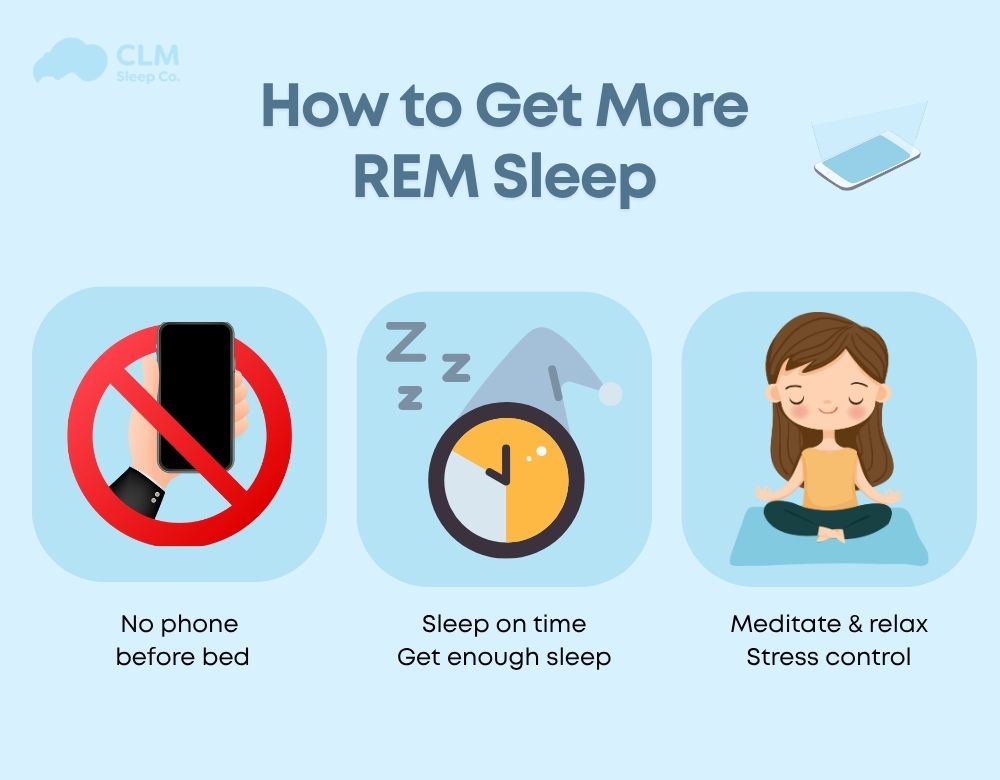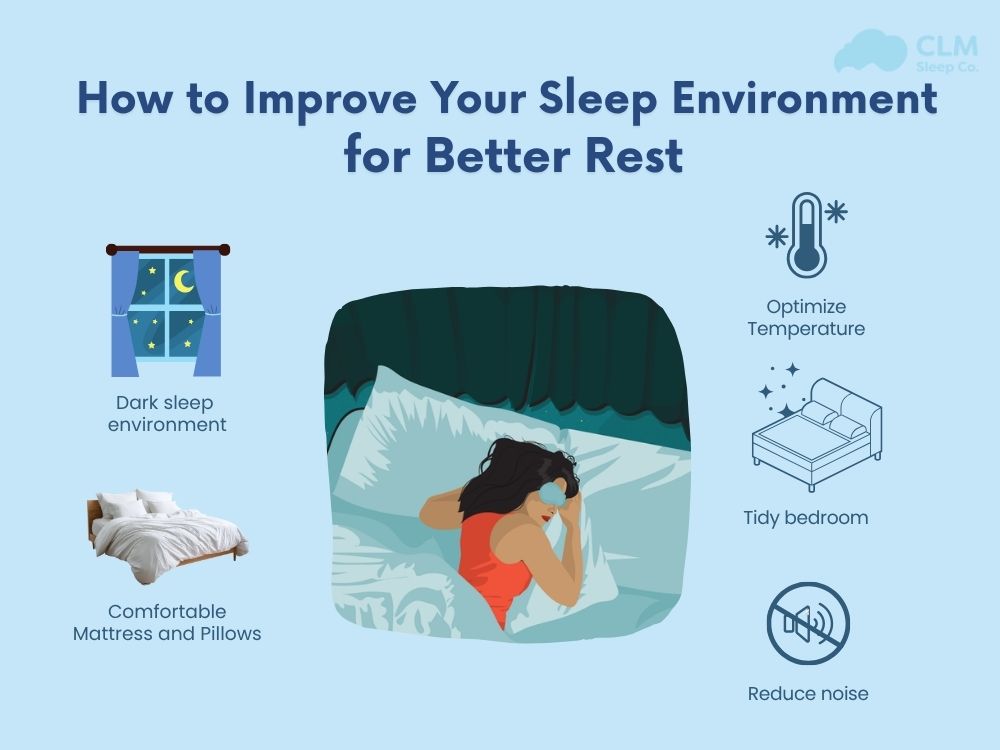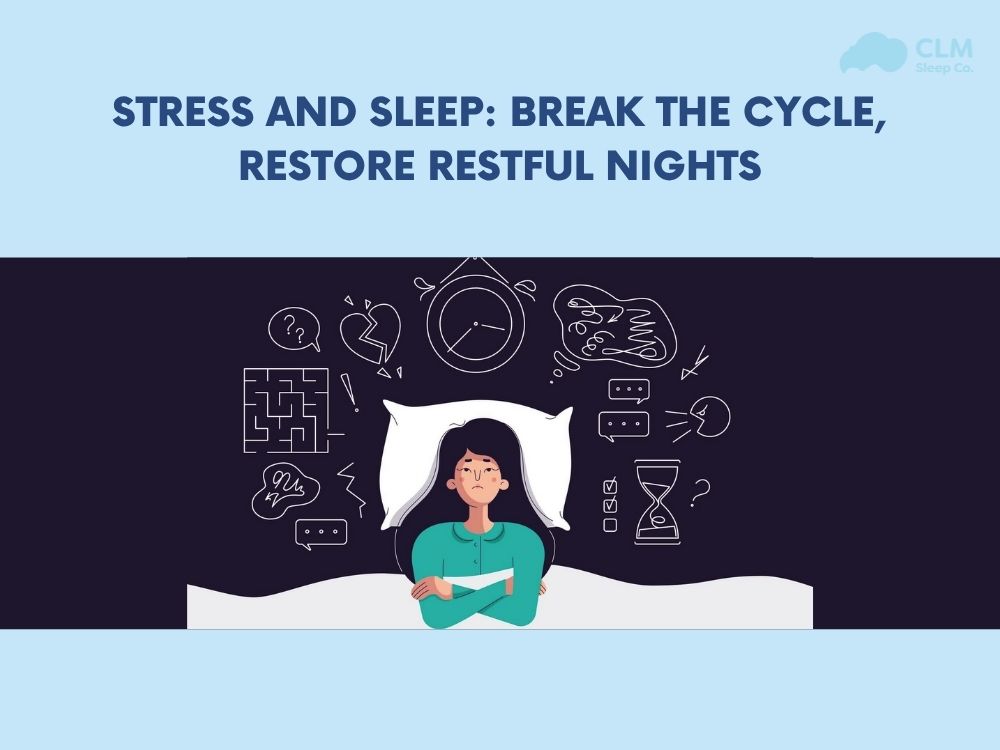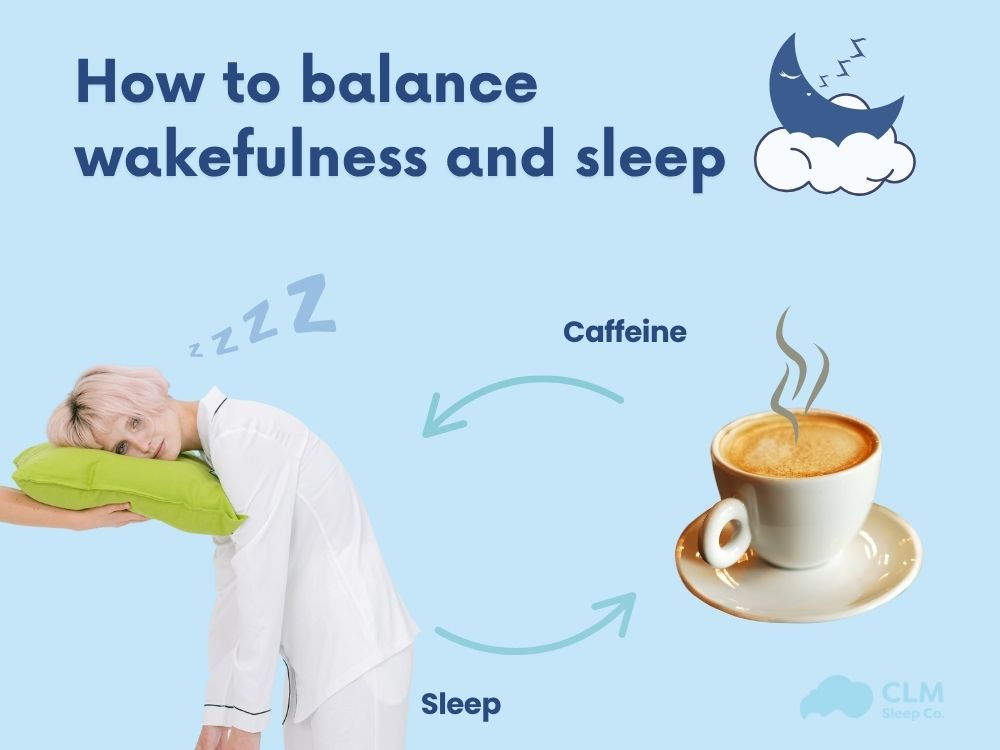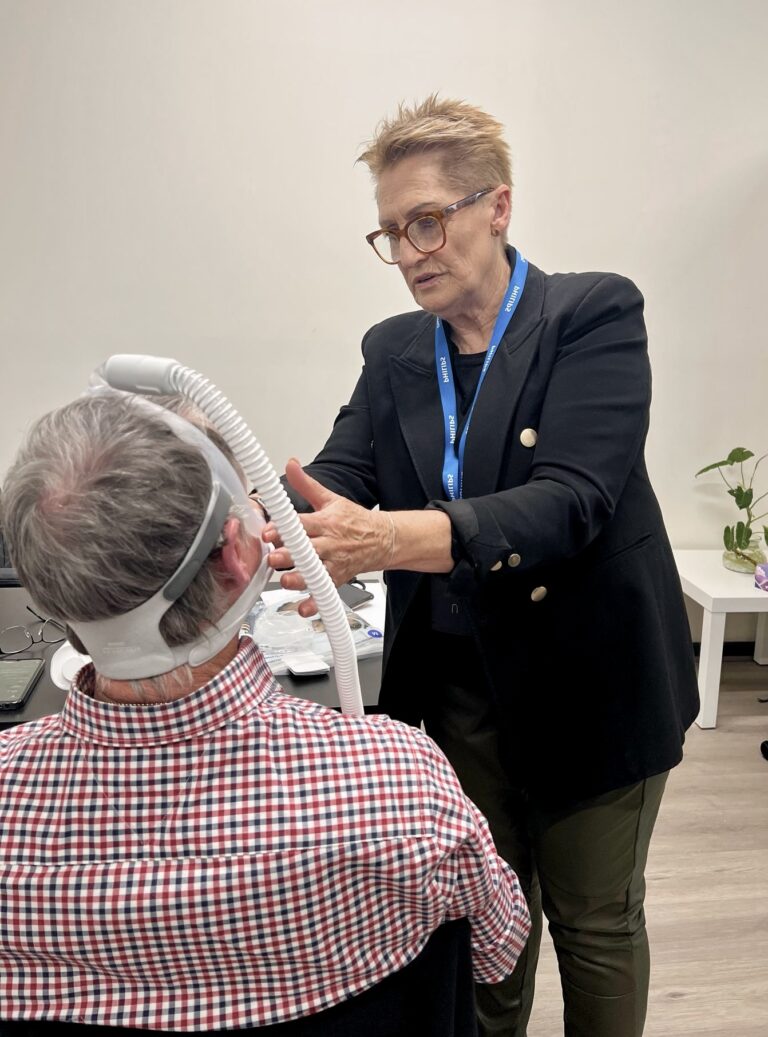REM sleep is more than just a stage of dreaming. It plays a vital role in brain function, emotional balance, learning ability, and creativity. Closely tied to your circadian rhythm, this phase helps regulate your internal clock and supports optimal brain performance. Without enough time in it, you may wake up feeling mentally foggy, unfocused, and emotionally off. By understanding how REM sleep works and discovering how to get more REM sleep through small lifestyle changes, you can experience better mental clarity, improved mood, and deeper rest. In this article, CLM Sleep shares essential insights and practical tips, all supported by science, to help you enhance this critical stage of sleep naturally and effectively.
Overview of REM Sleep
What Is REM Sleep
Rem sleep, or rapid eye movement sleep, kicks in about 90 minutes after you are put to sleep. The first REM phase is generally rather short, lasting perhaps 10 minutes; subsequent REM stages get increasingly longer as the night wears on, with the final cycle stretching to nearly an hour. Your heart rate and breathing pick up during REM, but meanwhile, your muscles stay in a state of paralysis to make sure you don’t embody your dreams!
While this stage is characterized by intense brain activity, it also makes REM-dreams feel quite vivid or intense. Hence, REM is much more than a mere dreaming stage. REM sleep also plays giant roles in learning and memory consolidation.
See more about other stages of sleep: light sleep and deep sleep, both part of the NREM phase.
The Role of REM Sleep
- Improves memory and learning: REM helps your brain process and store new information, turning short-term memories into long-term knowledge.
- Supports emotional balance: During REM, the brain works through emotions and stress. This makes it easier to handle challenges with a calm mindset during the day.
- Encourages creativity and problem solving: Many people experience moments of inspiration after a good night’s sleep. That is because REM helps connect ideas in new and meaningful ways.
- Helps brain development in children: Children spend more time in REM sleep than adults. This phase supports brain growth and learning in early life.
- Promotes overall mental and physical health: Lack of REM sleep has been linked to mood disorders, weakened immunity, and cognitive decline over time.
When Does REM Sleep Occur
REM sleep is the fourth and final stage in a typical sleep cycle. It usually begins around 90 minutes after you fall asleep. The first REM phase of the night is relatively short, lasting about 10 minutes. As the night continues, each REM cycle becomes progressively longer, with the later stages offering more time for deep dreaming and brain activity.
How Much REM Sleep Do You Need
REM sleep is marked by rapid eye movements, relaxed muscles, irregular breathing, an increased heart rate, and heightened brain activity. On average, adults need around two hours of REM sleep each night for optimal brain and emotional function. This stage supports memory consolidation, emotional regulation, cognitive development, and vivid dreaming.
When Does REM Sleep Occur in the Sleep Cycle
REM sleep is the final stage of a complete sleep cycle, which typically lasts about 90 to 120 minutes. It usually begins around 90 minutes after you fall asleep. As the night progresses, each sleep cycle includes longer periods of REM, with the most extended and restorative phases happening closer to the early morning hours. This is why uninterrupted sleep is essential — waking up too early can cut REM sleep short and leave you feeling mentally drained.
Common Signs of REM Sleep Deprivation
- Memory problems or forgetfulness: Struggling to recall details, names, or recent events may indicate that your brain is not getting enough time to process and store information during REM sleep.
- Difficulty concentrating and reduced learning ability: A lack of REM can impair focus, slow down reaction times, and make it harder to absorb or apply new knowledge.
- Mood swings or increased irritability: Emotional regulation is closely tied to REM sleep. Without enough of it, you may feel more easily frustrated, anxious, or emotionally unbalanced.
- Rarely dreaming or not remembering dreams: Because most vivid dreams occur during REM sleep, not dreaming at all or never recalling them could be a sign that your REM cycles are too short or being disrupted.
When to Consider a Sleep Study
If you consistently experience signs of poor REM sleep, an in-lab sleep study can offer quick and accurate insights. This medical test monitors your brain waves, breathing, heart rate, and sleep stages overnight. It helps identify specific sleep disorders like REM sleep behavior disorder or sleep apnea, and allows healthcare providers to recommend the most effective treatment.
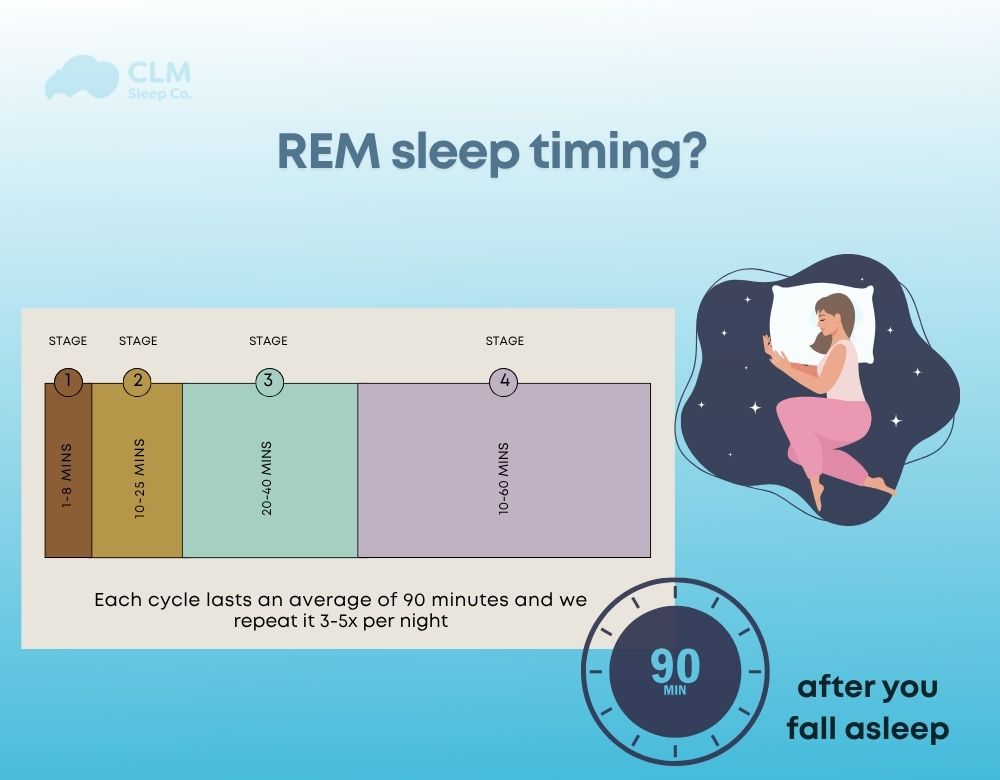
See more: Rircadian Rhythm Disorder
How to Get More REM Sleep Naturally
If you want to improve REM sleep, it is important to focus on three key areas: reducing stress, avoiding disruptions during the night, and increasing your total sleep time. By building healthy habits and creating a sleep-friendly routine, you can help your brain enter REM sleep more often and for longer durations.
Increase Nightly Sleep Duration
Getting enough total sleep is the foundation for healthy REM cycles. Aim for at least seven to nine hours per night, as longer sleep allows more time for your brain to progress through multiple REM phases.
Organise and Manage Your Time Wisely
A balanced schedule helps you avoid staying up too late or cutting into your sleep hours. Set limits for evening tasks and avoid last-minute work that might delay bedtime.
Stress Management
Chronic stress is one of the main barriers to deep, uninterrupted sleep. Managing stress through exercise, social support, or creative hobbies can help your mind settle down and prepare for a restful night.
Set a Consistent Bedtime Every Day
Going to bed and waking up at the same time daily trains your internal clock. This regular rhythm improves the quality of your sleep and increases your chances of entering longer REM phases.
See more: The Best Sleeping Position
Practice Meditation and Deep Breathing
Mindful breathing and short meditation sessions can relax your nervous system before bed. These techniques calm the mind, reduce nighttime awakenings, and support more stable REM cycles.
Do Yoga Regularly
Gentle stretching, especially in the evening, can relieve muscle tension and promote mental relaxation. Practicing yoga several times a week is linked to better sleep quality and more frequent REM sleep.
Avoid Caffeine and Alcohol in the Afternoon or Evening
Both caffeine and alcohol can interfere with your natural sleep architecture. Caffeine delays sleep onset, while alcohol shortens REM and fragments the later stages of sleep.
Avoid Using Electronic Devices Before Bed
The blue light from phones, tablets, and laptops can block melatonin production and keep your brain alert. Shut off screens at least one hour before bed to help your mind transition into sleep.
Relax Before Bedtime
A calming pre-sleep routine signals to your body that it is time to wind down. Try reading a book, listening to soft music, or writing in a journal to reduce mental chatter before lying down.
Limit Water Intake Close to Bedtime
Drinking too much water late in the evening can lead to nighttime bathroom trips, which may interrupt your REM sleep. Try to hydrate earlier in the day and reduce intake in the hour before sleep.
See more: Delayed sleep phase disorder
Keep Your Bedroom Quiet, Dark, and Cool
A peaceful environment makes it easier to fall and stay asleep. Use blackout curtains, turn off noisy electronics, and adjust the room temperature to stay comfortable through the night.
See more: How to fix Circadian Rhythm
Foods That Support REM Sleep
Certain foods contain nutrients that help your brain regulate sleep hormones, calm the nervous system, and improve the quality of your REM sleep. Consider adding these to your daily diet:
- Oatmeal: A complex carbohydrate that helps increase tryptophan availability and supports melatonin production.
- Turkey: A well-known source of tryptophan, which the body converts into serotonin and melatonin.
- Eggs: Rich in both tryptophan and B vitamins that aid brain function and sleep regulation.
- Pumpkin seeds: High in magnesium, which promotes muscle relaxation and deeper sleep.
- Almonds: Contain both magnesium and healthy fats that support steady sleep cycles, including REM.
- Spinach: A leafy green packed with magnesium and B vitamins that contribute to sleep hormone synthesis.
- Bananas: Provide vitamin B6, magnesium, and natural sugars that help with melatonin production.
- Salmon: A fatty fish rich in omega-3s and vitamin B12, supporting brain health and REM sleep.
- Tuna: Contains vitamin B6, which helps boost melatonin levels.
- Chamomile tea: A herbal tea known for its calming effect, helping ease the body into sleep.
- Valerian root tea: Traditionally used to promote sleep and reduce the time it takes to reach REM.
- Whole grain toast with peanut butter: A small snack that combines complex carbs and tryptophan for a sleep-friendly evening boost.
Note: Avoid heavy meals, caffeine, and sugary snacks in the evening, as they may interfere with sleep quality and reduce REM duration.
Conclusion
Knowing how to get more REM sleep at night is about giving your brain the time and space it needs to recharge. From managing your stress to avoiding late-night caffeine and setting a consistent bedtime, small changes can lead to big improvements.
Better REM sleep means better memory, better mood, and a better you. At CLM Sleep, we believe that restful nights lead to brighter days. Start your journey tonight – your brain will thank you tomorrow.
